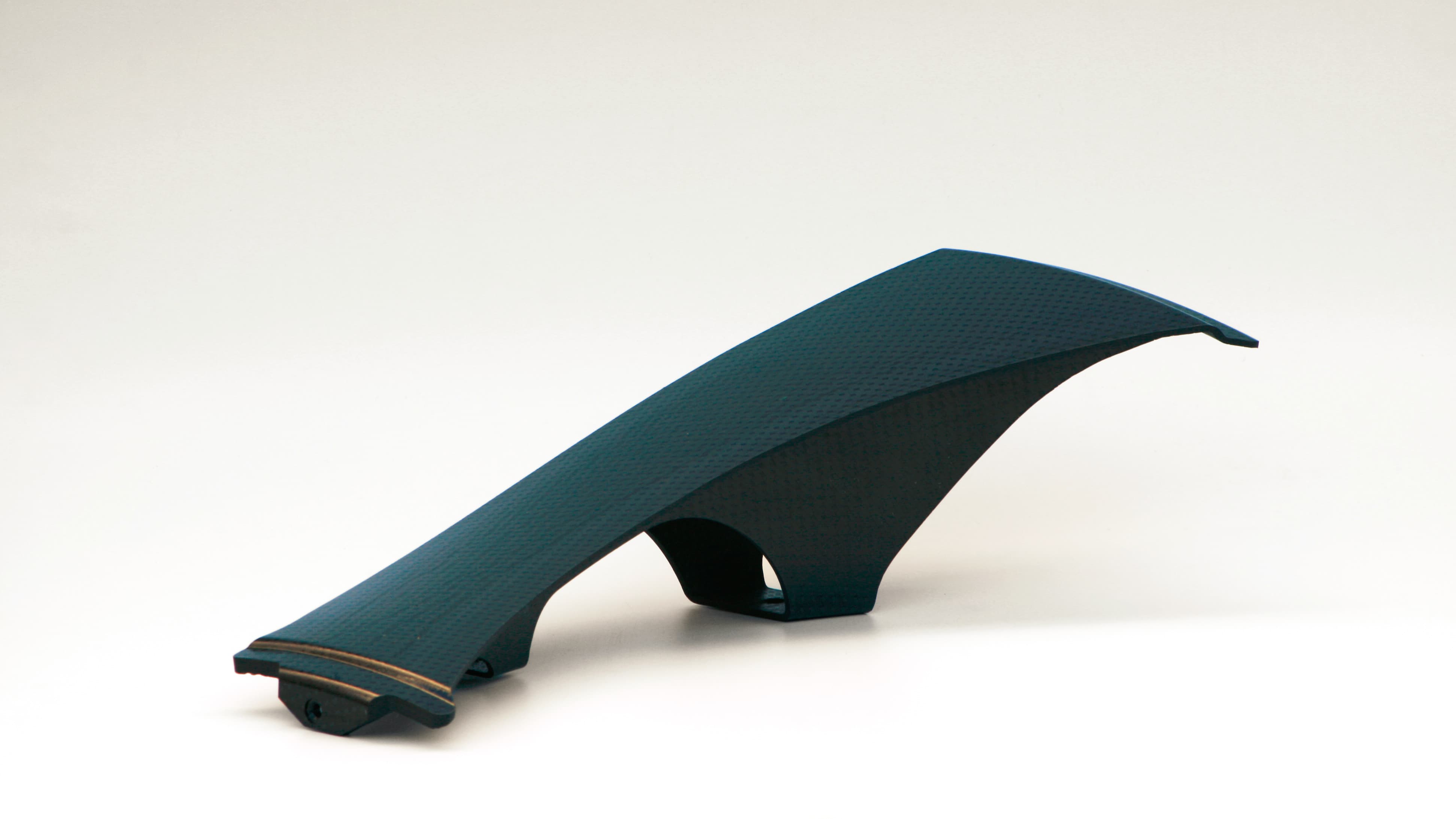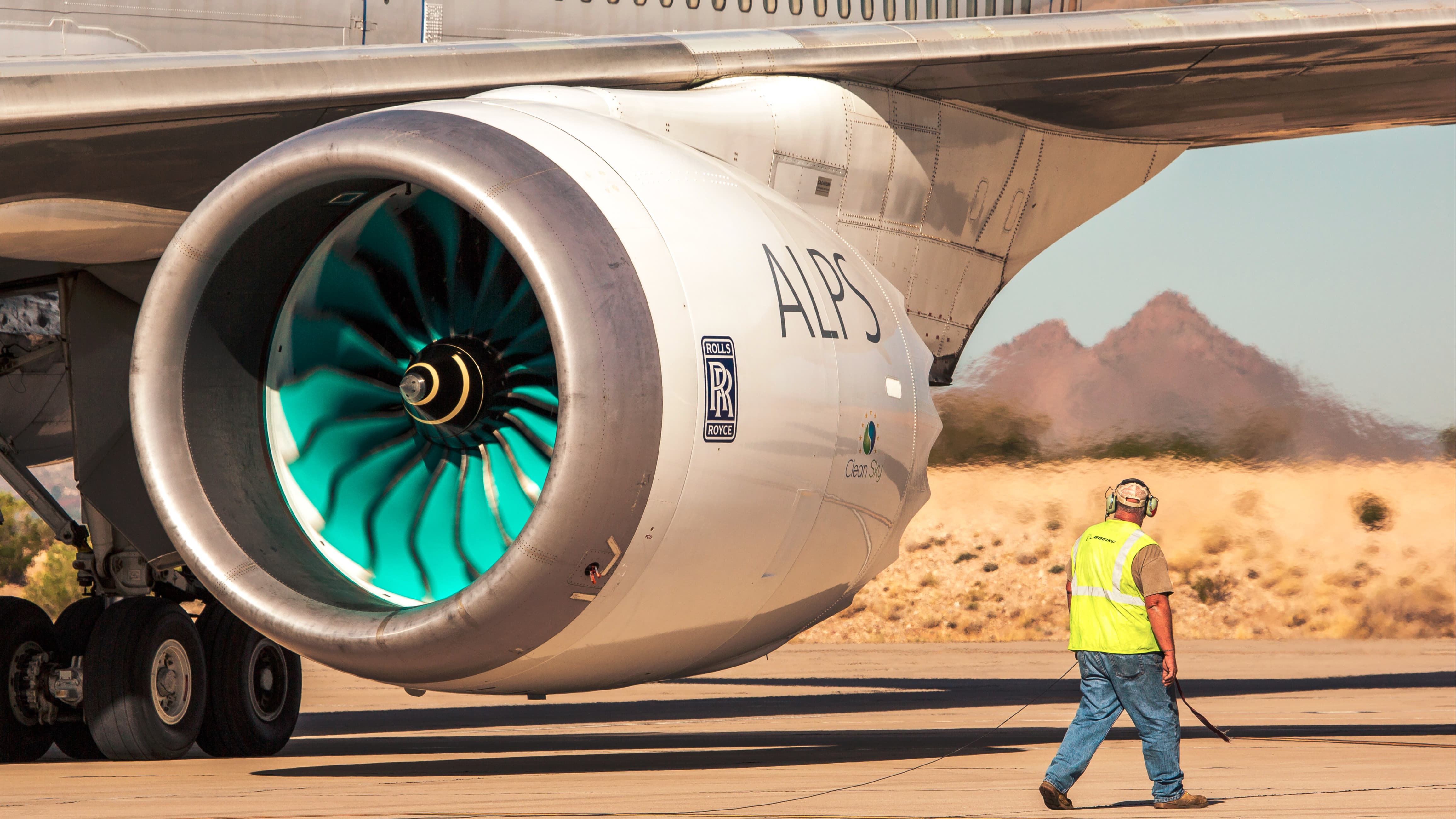Composite Annulus Filler for Rolls-Royce Jet Engines
Together with FACC, IWK has developed a composite annulus filler for the next generation of Rolls-Royce jet engines. The part comes as metal replacement, thus saving weight and increasing safety, and is manufactured in a cost-efficient RTM process.
Within the CleanSky funding scheme of the EU Framework Programm 7, Rolls- Royce, FACC and the IWK Institute for Material Technologies and Plastics Processing have developed a novel composite annulus filler for jet engines. An annulus filler covers the gap between the fan blades and ensures an optimal aerodynamic profile. The project included concept development, design, dimensioning, process development, manufacturing and destructive and non-destructive testing.
Targeting lower weight, the current aluminium annulus filler will be replaced by a composite component. The reduced mass leads to lower fan disk load and helps save material, costs and energy. In addition, in the highly unlikely event of a filler detaching from the rotating hub, the resulting damage to surrounding components is reduced due to the failure mechanism of composites, where energy is distributed across the casing. This further helps optimizing casing design and weight.
Starting from several feasible designs, the most promising concept has been evaluated, based on different boundary conditions such as mechanical properties, safety, costs and manufacturing aspects. Sophisticated finite element simulation and parallel experimental verification allowed further optimization of the composite filler. The component is manufactured at FACC (Fig. 2); testing started in early 2014. After spinning rig tests, the first flight of the ALPS demonstrator engine, mounted onto a Boeing 747-200, took place on October 14, 2014 in Tucson USA.



